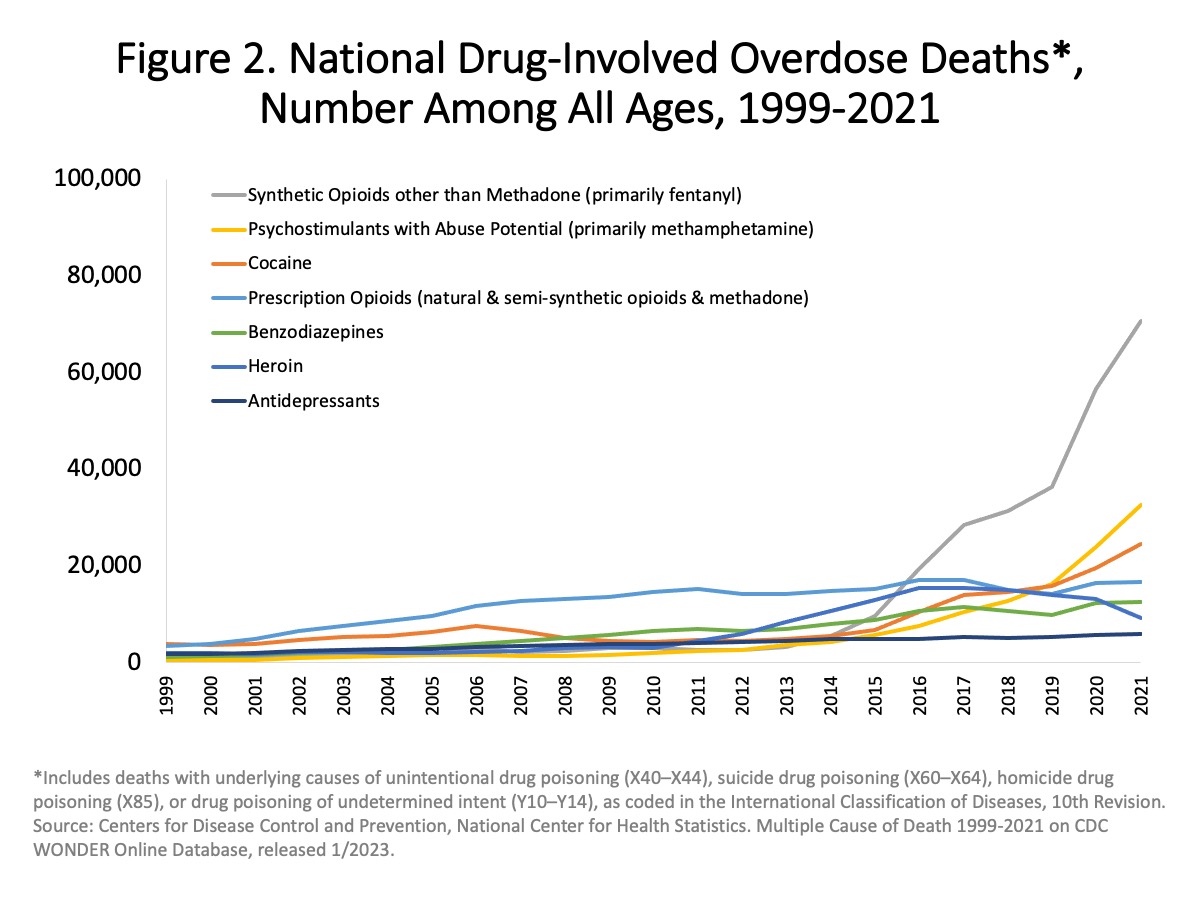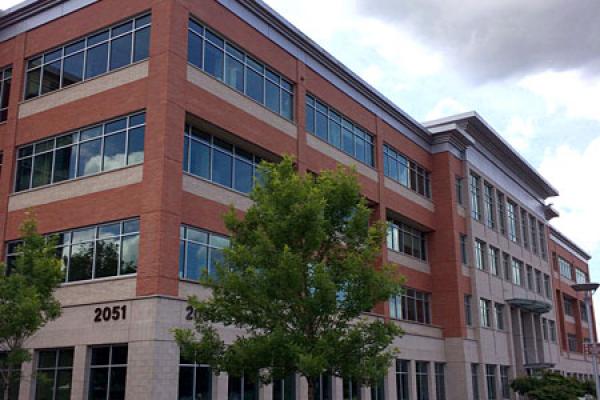Clackamas County, like many communities in Oregon and across the nation, is in the midst of a substance-use addiction and drug-overdose crisis. This crisis is driven largely by fentanyl alcohol, methamphetamine, benzodiazepines, and more recently, a drug called xylazine.
The Clackamas County Public Health Division, in collaboration with community prevention partners, are working together to address the substance use and opioid crisis. We know this will require continue collaboration across systems and across the continuum of care – prevention, treatment and recovery.
This work is focused on:
- Ensuring timely access to behavioral health interventions
- Supporting safe prescribing and alterative pain care
- Access to medications for opioid use disorder (MOUD)
- Harm reduction efforts
- Supporting a focus on education and prevention of opioid misuse and abuse; and
- Supporting innovative public health-public safety approaches that address the needs of our justice-involved population.
Help is Here
If you or you know someone struggling with addiction, please reach out for help:
Clackamas County Crisis Line
This is a confidential telephone resource staffed by trained, caring individuals who can help callers work through a crisis, however big or small. We offer suicide screening and can help create a safety plan. Even if there is no crisis, we will offer support, connection, information and education. It is available 24 hours a day.
Call 503-655-8585, or visit their website.
Lines for Life alcohol and drug helpline
If you or someone you know needs help understanding or dealing with substance use, Lines for Life can provide compassionate support that can put you on a path to healing. This Alcohol & Drug Helpline assists those struggling with substance abuse and can provide referrals to local resources for peer support and treatment.
Call 800-923-4357 or visit their website.
Substance use treatment
If you or someone you know needs treatment for substance use or help navigating a path to recovery, help is available in Clackamas County.
Project Hope
Recovery supports for overdose survivors and those navigating the road to recovery.
Overdose Prevention
First, it’s important to know the signs of an overdose. These are some of the signs to look for:
- Won’t respond or wake up
- Slow, weak, or no breathing
- Gurgling or snoring sounds
- Blue or gray skin or lips
- Cold or clammy skin
- Small “pinpoint” pupils
- Limp body
What to do if you think someone is experiencing an overdose
- Call 911 first. Tell the 911 operator your location and that you are with a person who is not breathing and might be overdosing.
- If you have Naloxone/Narcan with you, put the nozzle into their nostril and dispense the medicine. Oregon’s Good Samaritan Law protects you from civil prosecution or liability if you give someone naloxone in a good faith. It also protects bystanders from criminal prosecution for possession of drugs if they call about an overdose.
- Give rescue breaths
- If you have to leave the person alone, put them on their side with their arm supporting their head.
- Stay with them until help arrives.
Drug safety and overdose prevention
- Never use alone. Have someone with you and don’t use at the same time in case someone becomes unconscious. That person can call for help.
- Don’t trust your drug tolerance. Drug content and potency is not predictable, even within the same batch. Even people who have a high tolerance for opioids face an increased risk of death because of the inconsistency in the drug supply. Always go slow and do a test amount.
- Don’t mix different types of drugs and/or alcohol. This increases the risk of overdose.
- Get rid of medicines you don’t need anymore. Sharing or saving medications is a bad idea. People most commonly report they got drugs from a friend or family member. Please remember to store your medications in a safe location and dispose of them when they expire, or you are finished with the prescription. Medications should not be flushed down the toilet or drain because they can contaminate the local water supply. We have several drug take-back sites in our county to use and mail-back envelopes are an excellent resource if you don’t live near a take-back site. Visit the Med Take Back Oregon website to learn more. You can also get free medication disposal pouches from locations across Clackamas County.
- Syringe exchange is a proven, effective way to reduce HIV and hepatitis C transmission. These services also distribute naloxone, sharps containers, safer sex supplies and offer risk reduction counseling and can refer you to services like medical mental health care, shelter services and alcohol and drug treatment.
Naloxone
Naloxone (brand name Narcan) is a lifesaving medication that quickly reverses opioid overdoses including fentanyl, heroin and prescription opioid medications. Naloxone knocks the opioid drug off brain receptors and restores normal breathing. It’s completely safe, even for children and people who are pregnant, and anyone can learn how to administer naloxone.
How to use naloxone
You can also register for an in-person naloxone training here, or view a recording of a recent virtual training here.
Where to get naloxone in Clackamas County
- For people with opioid-use disorder or those who have an opioid prescription, most insurance companies cover the medication (but may charge a co-pay).
- Oregon Health Plan (OHP) provides full coverage. If you need naloxone, ask to speak with a pharmacist.
- Local syringe-exchange sites offer naloxone kits and overdose prevention support.
- The U.S. Food and Drug Administration approved over-the-counter use of Narcan. You can find discount coupons at GoodRX.
- Clackamas County Sheriff's Office vending machines stock free naloxone at three locations in Oregon City.
- Outside In, Clackamas Service Center, 503-771-7914: 8800 SE 80th Ave., Clackamas, 97206, Tuesdays and Thursdays from 1 to 4 p.m.
- AntFarm, 503-668-9955, 39140 Proctor Blvd., Sandy 97055 and two locations in Estacada, 350 SW Zobrist St, Estacada, OR 97023 and 354 SW 2nd Ave, Estacada, OR 97023
- Youth Era, 541-214-6643, 11097 SE 21st Ave, Milwaukie, 97222
- LoveOne Events (in Milwaukie, Molalla and Oregon City)
If you are a organization that serves people at-risk of overdose in Clackamas County, please complete the Naloxone Kit Request Form to request kits. Clackamas County Public Health has limited resources and is working hard to ensure equitable access to naloxone in the community. Because naloxone is now available over-the-counter for those with the means to purchase, our priority is to ensure that kits go to those who are most at-risk and for who cost is a barrier. With that in mind, we ask that you try to use the following guidance when distributing kits:
- The person lives or works in Clackamas County and is at least 15 years old, and
- They or a loved one use opioids or other drugs and are at-risk of overdose, or
- They are frequently in situations where they’re likely to respond to an overdose
Opioid and Fentanyl Crisis
In 2021, more than 100,000 people died from drug overdose in the United States. Of these, 75% were from opioids, including prescription opioids, heroin, and synthetic opioids like illicitly manufactured fentanyl. Fentanyl is up to 50 times stronger than heroin and up to 100 times stronger than morphine, so even small amounts of fentanyl can cause an overdose.
Many illegal drugs, including counterfeit prescription opioid pills, heroin, cocaine, methamphetamine, and ecstasy, can be mixed or laced with fentanyl with or without a person’s knowledge. In addition, counterfeit pills are now being sold through illicit drug markets, and more recently on social media. Buyers or users may not even know the drug they’re purchasing contains fentanyl. Learn more about the dangers of counterfeit pills.

Source: National Institute on Drug Abuse
Our Black and Indigenous communities have been hit much harder than other racial and ethnic groups in Oregon, with more than twice the rate of overdose deaths. In the Black and American Indian/Alaska Native communities, rates of overdose deaths per 100,000 were 75.9 and 71.3 respectively, compared to the rate for white people, which was 33.9, according to CDC Vital Statistics data. Clackamas County Public Health is dedicated to health equity and strives to connect these communities to resources such as naloxone, wound care kits and culturally specific services.
Latest News
Prevention-Focused Organizations
Organizations that provide education and prevention programming around youth substance use, positive youth development, extracurricular activities and more.
- AntFarm (Sandy, Estacada and Molalla)
- Community Living Above (West Linn and Lake Oswego)
- The Living Room/New Avenues for Youth (Gladstone)
- Northwest Family Services and Vibrant Future Coalition (Clackamas, Milwaukie and Happy Valley)
- Oregon City Together (Oregon City)
- Todos Juntos (Canby, Estacada, Molalla and Sandy)
- Youth ERA (Milwaukie)
 Translate
Translate






